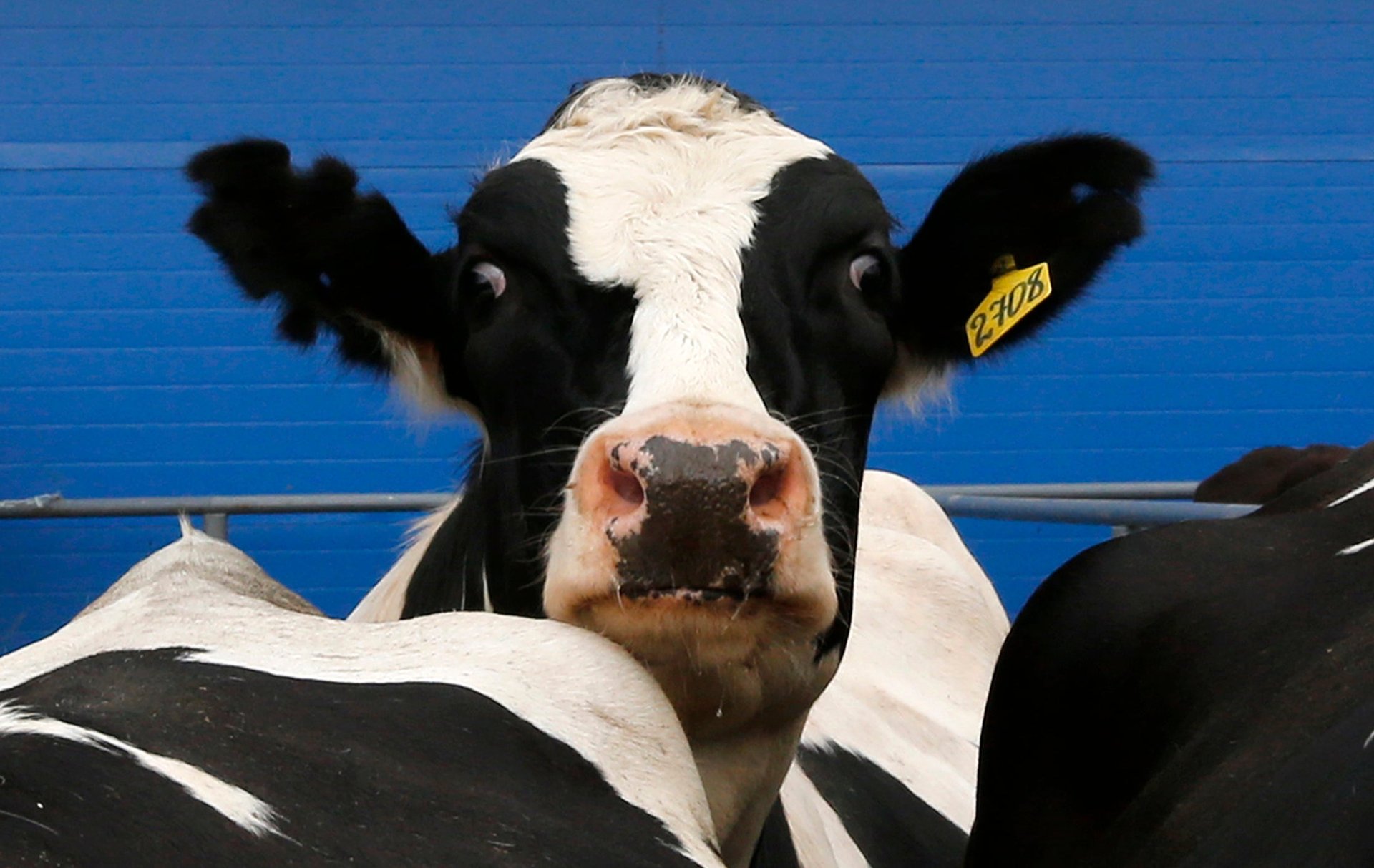The Dutch are subverting nature again—with floating dairy farms
Marooned, that’s what they are. All 32 of them. Single file they lined up one day and marched onto a floating platform. This is now where they live.


Marooned, that’s what they are. All 32 of them. Single file they lined up one day and marched onto a floating platform. This is now where they live.
And it’s a sight to behold. A small herd of well-fed dairy cows standing—probably bored—on a $2.9 million waterborne contraption in Rotterdam, Holland, just off the banks of the Nieuwe Maas, which branches off the Rhine River.
But are they happy? Minke van Wingerden seems to think so. She’s the co-founder of The Floating Farm, a project she started in an effort to promote urban farming.
“One week ago we were ready to let them graze outside,” van Wingerden says. A ramp was erected, connecting the platform to a field, and workers opened up the cows’ fence. “We had in mind that they would go out immediately, but they waited to see what was going on,” she says. “I think they are very happy.”
These cows are part of a Dutch experiment to rethink how cities are supplied with dairy products while promoting a sustainable food cycle. The cows are fed with grass from local soccer fields, potato peels discarded by the french fry industry, and leftover bran from area windmills. Those resources are picked up and delivered to The Floating Farm with electric cars.
The cows—a native Dutch breed called Meuse Rhine Issel—are milked by robots, each heifer producing up to 25 liters (6.6 gallons) of milk per day. There are other robots on the island, too, but they’re tasked with the less desirable job of cleaning up manure, which is then recycled back into the neighborhood as fertilizer. Currently, about 23 retail outlets in Rotterdam carry milk from The Floating Farm.
Leave it to the Dutch to once again subvert the natural order of things. They were ingenious enough several hundred years ago to erect a system of dikes and canals so they might exist in a land that would otherwise be swallowed up by flood waters. The idea of sustainable cell-cultured meat is also a Dutch one, with leading start-up Mosa Meat headquartered in Maastricht, a 2.5 hour train ride southeast of Rotterdam.
“We are eager to shape things by our own hands and make things happen,” van Wingerden says.
The idea to build the farm came about after she and fellow founder, Peter van Wingerden, watched Hurricane Sandy hit New York City in 2012. In the wake of the storm, it was initially tough to get fresh food into the city. So the pair started brainstorming ways to cut down on the time and energy it takes to deliver agricultural goods to urban areas. Their floating platforms can operate in cities that abut oceans, ports, rivers, and lakes. They can also be easily moved to new locations in the event of big storms.
The global population is growing, says Minke van Wingerden, but the amount of available agricultural land will stay the same. As sea levels rise, hurricanes barrel up coastlines more frequently, and droughts in agricultural zones become more punishing, food will still need to be produced to match the global demand. For those reasons, the floating farm model may prove useful.
To be sure, The Floating Farm model isn’t a complete answer for the changes inflicted by the global climate crisis. Future operations are being designed to house 110 cows. That may help supply some urban neighborhoods with milk, but the vast majority will still be produced by land-based farming operations. In the US, for instance, California is the nation’s largest dairy-producing state. There, farms with at least 500 cows still account for 88% (pdf) of the state’s milk each year. That makes The Floating Farm more a stop-gap measure, or thought experiment, than a disruptive invention.
Still, the current dairy cow island is a small-scale laboratory for what they hope to build. Already a handful of cities in Asia have expressed interest in using the floating farm model. And while van Wingerden is mostly tight-lipped about which cities her company is speaking with, Hakai Magazine reports that Singapore and Chinese cities Nanjing and Shanghai are exploring the idea. Both the city-state and the Chinese government have in recent years been looking for ways to be more sustainable
Minke van Wingerden says she is already working to create floating farms for chickens and small-scale vertical farms for food plants. Whether farm animals are ready to embrace a Water World future is uncertain, but if the Dutch have anything to do with it, the poultry may not have a choice in the matter.